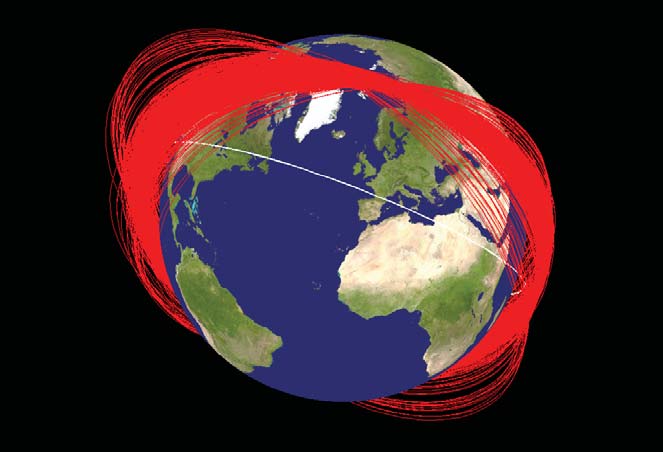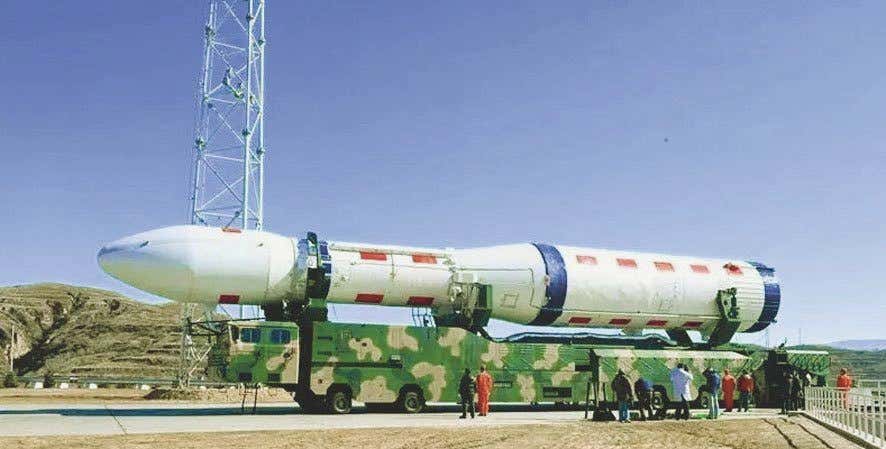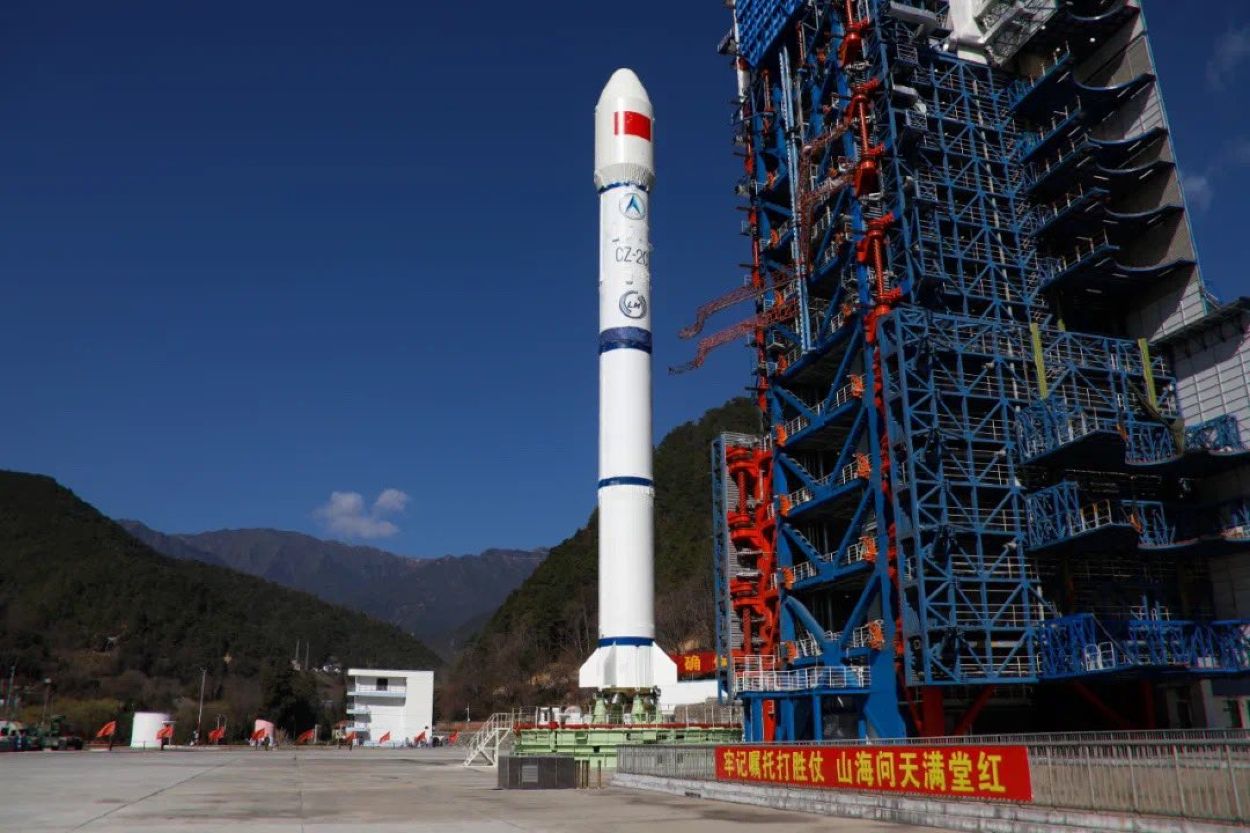As the Space Force approaches its fourth birthday, Chief of Space Operations General Bradley Chance Saltzman identified one of its biggest threats – China’s anti-satellite (ASAT) missile capabilities.
During the Cold War, the US and the Soviet Union carried out many ASAT tests to ace the space race against one another. However, by 1980, these tests had been discontinued due to criticism that they generated excessive amounts of debris, endangering the lives of astronauts and important space assets.
China joined the elite league of countries with anti-satellite capabilities, as demonstrated in a test in 2007. It used a modified ballistic missile to destroy one of its weather satellites, resulting in the largest-ever space debris field with over 3,000 trackable pieces.
A reminder of the debris’s enduring effects came last year when the International Space Station had to make an evasive maneuver to escape it.
Saltzman has widely cited China’s 2007 test as a watershed moment in the history of military space operations. He cautioned that such weapons continue to be a serious threat during his speech at the Atlantic Council on November 15, Air and Space Forces Magazine reported.
“That’s a double problem because they can take out satellites, and the debris created by those destructions can cause other problems in orbit,” Saltzman said. “It’s a compounding problem we have to figure out.”
The debris from China’s 2007 ASAT test and a more recent Russian test are still in orbit. The US Space Force has iterated on multiple occasions that it must monitor current threats while simultaneously working to thwart future ones as the domain grows increasingly contested and complex.

The problem is compounded by beliefs that Beijing is constantly accruing new anti-satellite capabilities that could pose a problem and add to the militarization of space. A 2020 Pentagon report warned that China is making headway in developing electronic weapons and missiles that can target satellites in both low and high orbits.
According to the report, China “probably intends to pursue additional ASAT weapons capable of destroying satellites up to geosynchronous Earth orbit” and already has operational ground-based missiles that can destroy satellites in low-Earth orbit.
According to the Pentagon, Chinese military planners believe modern warfare revolves around the ability to use space-based systems and deny them to opponents. The paper claims that despite opposition to space militarization, China has strengthened its military space capabilities for years.
Although China has been making steady progress in this field, the report notes that the country has not officially admitted the existence of any new anti-satellite weapons programs since it confirmed it fired an ASAT missile in 2007. However, US Space officials and lawmakers have repeatedly acknowledged China’s threat in space.
Earlier this year, General Saltzman told a media group that the escalating arms race had “fundamentally changed” space in a few years. He named China the “most challenging threat,” followed by Russia.
In fact, on March 14, during a Senate Armed Services Committee hearing, General Saltzman described the difficulties he believes a disputed space domain presents and the steps the Space Force is taking to prepare for them.
“When describing space threats, it is important to account for two kinds: first, threats from space assets and second, threats to space assets,” Saltzman said.
In his latest interaction, he seems to have come up with an outline of how the United States Air Force will take on the challenge posed by China’s burgeoning ASAT capabilities.
Saltzman: A Man With A Plan!
Saltzman has iterated that the Space Force must monitor current dangers while simultaneously working to thwart future ones as the domain grows increasingly congested and complicated. He believed that the Space Force’s shift to a more robust infrastructure for its ground-based networks and satellites in orbit is essential for deterrence.
Leading the way in these endeavors is the Space Development Agency, which is constructing a widespread constellation of hundreds of Low-Earth Orbit (LEO) satellites for data transfer and missile tracking/warning. The idea is that it will cost more to shoot down one satellite than it costs to field one, according to SDA director Derek M. Tournear.
Saltzman stated that the Space Force needs to focus on developing methods for satellites to fight and protect themselves against both kinetic (physical attacks like missiles) and non-kinetic (electronic or cyberattacks) attacks in addition to producing smaller satellites.
Saltzman highlighted the significance of developing proven strategies to thwart cyberattacks and instructing operators to employ them promptly for non-kinetic defense capabilities. In a disputed space environment, the objective is to lessen the impact of possible attacks while maintaining satellite functionality.
As Saltzman puts it, the thought of denying competitors a first-mover advantage is what motivates the urgency. Another issue is the openness with which information is shared in China, which may impact safety. Saltzman emphasized that communication must be proactive, especially in situations where objects collide in space.

Regardless of the parties involved, including China, the Space Force unilaterally issues warnings when it discovers two objects that may approach each other closely. But occasionally, according to Saltzman, they fail to respond, which puts people at risk.
Dr. Lisa Costa, Chief Technology and Innovation Officer of Space Force, recently expressed concern over China’s potential lack of transparency on their TTPs (Tactics, Techniques, and Procedures) and CONOPS (Concept of Operations).
In October, the Pentagon issued its most recent annual report on China. It cautioned that China prioritizes controlling space-based information, which entails keeping rivals from exploiting space for communication and information gathering.
Along with developing counter-space capabilities like ground-based lasers and kinetic-kill missiles, China is investing significantly in space-based intelligence.
Against that backdrop, it becomes imperative for the US Space Force to focus energy and divert resources on efforts required to thwart an attack on its space-based assets in case of a future contingency in space.

In April 2022, US Vice President Kamala Harris declared that the US would refrain from testing destructive, direct-ascent anti-satellite (ASAT) missiles and that the US aimed to make this a new international standard for responsible space behavior. In August this year, the European Union joined the US proposal against ASAT.
However, such a proposal has been vehemently opposed by both China and Russia. On its part, Beijing has labeled the US proposal to ban anti-satellite weapons testing in space as promoting “fake arms control” and “real military expansion.”
This has only exacerbated the threat for Washington, forcing it to take a thorough look at measures to prevent harm as its rivals refuse to come on board with a ban.
- Contact the author at sakshi.tiwari9555 (at) gmail.com
- Follow EurAsian Times on Google News




